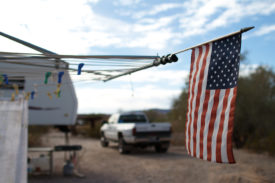60 or 50? So much depends on those numbers.
The news went barely noticed a few weeks back: almost every school district in the state of Washington that put a levy or bond measure on the February ballot won voter approval. Despite the worst recession in decades, citizens stood behind their public schools and agreed to tax themselves about $6 billion—more than $900 per resident of the state.
An extraordinary story of the public coming together during hard times? Not really.
Instead, it’s a story of a successful game changer. In 2007, Washington amended its state constitution to eliminate the supermajority requirement for approval of school levies. A simple majority of voters—50 percent plus 1—can now approve education funding.
Consequently, an additional 66 levies worth $1.7 billion to schools passed in February elections. According to a League of Education Voters tally, that’s how many levies garnered at least 50 percent of votes but less than 60 percent.
What’s more, school districts emboldened by the simple-majority threshold may have increased the sums they proposed to voters, meaning that $1.7 billion may be an understatement of the benefit to schools. And, of course, the simple-majority rule is now enshrined in the constitution and will continue bringing deeper investments in education for years to come. One rule change in favor of majority rule: tens of billions of dollars of investment in public education.
Would that the US Senate operated on the principle of majority rule!
Oh, wait. It does. The US Constitution says so.
The 60-vote supermajority in Senate procedures is required to stop debate, not to pass a law. I’ll write more about the filibuster soon.
What merits underlining here is simply that, were it not for the Senate’s undemocratic, historically accidental, and self-imposed 60 percent filibuster rule, the United States would probably already have a climate and energy law similar to the bill that passed the House in June. If it did, Canada might be close behind, and the Copenhagen climate negotiations might have gone much better. The Northwest would already be much further down the road to a clean-energy revolution, a price on carbon emissions, and a green-jobs recovery. (And that’s to say nothing of US health-care reform, banking reform, immigration reform, and a dozen other public priorities that are essential to the Northwest’s future.)
Sixty or fifty. Much of our future depends on these numbers. To win for our children the secure, prosperous, sustainable way of life they deserve, we ought to heed the lesson of the school levies and pay more attention to the rules of governance. We ought to look for game-changing reforms that will make democracy work better. More on this theme next time, but I’ll start with a hint: it’s not just in hockey that Canada has an edge over the United States.
Editor’s note: Alan’s next post, “Un-democracy and the US Senate,” will run next week.








